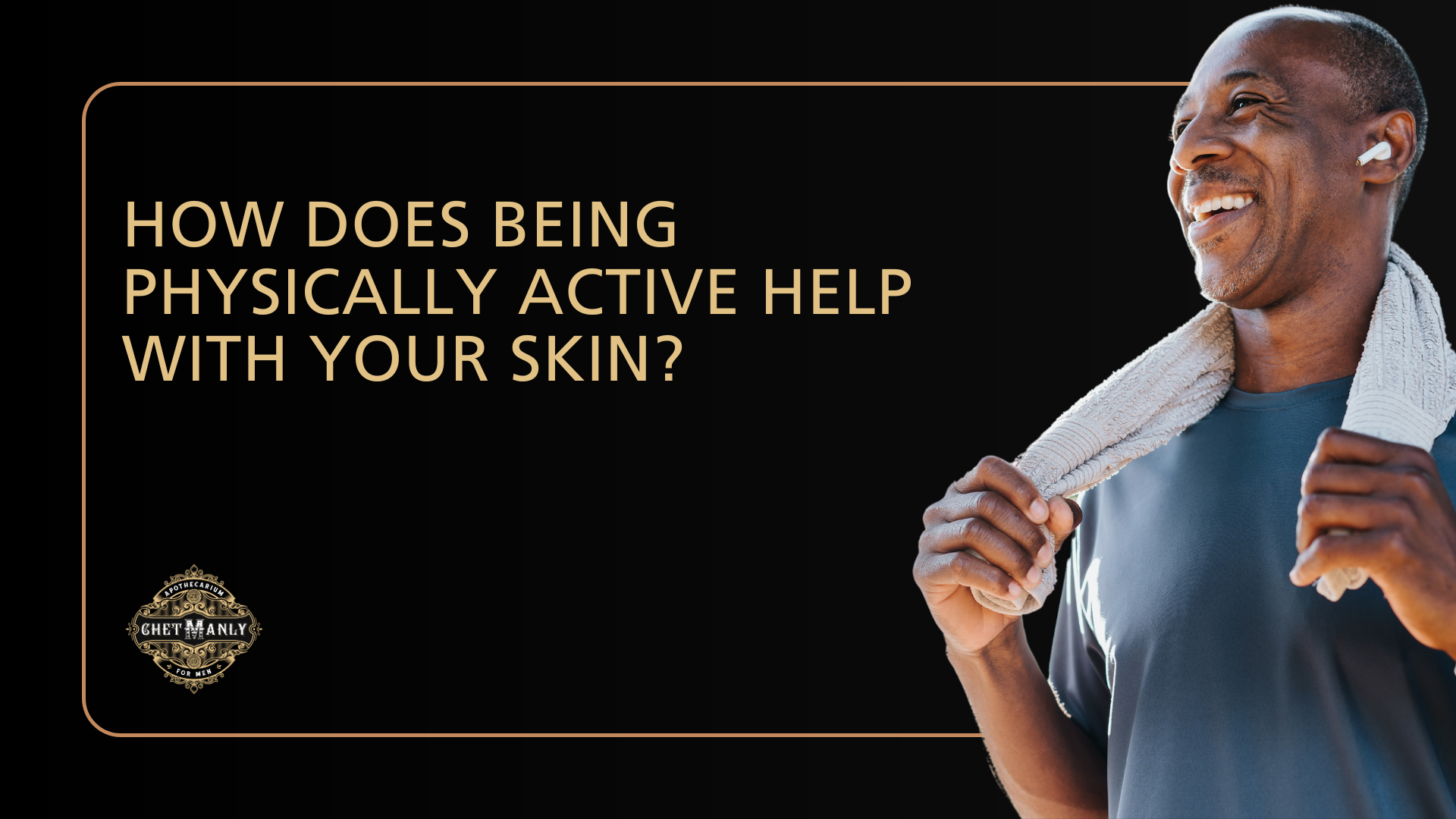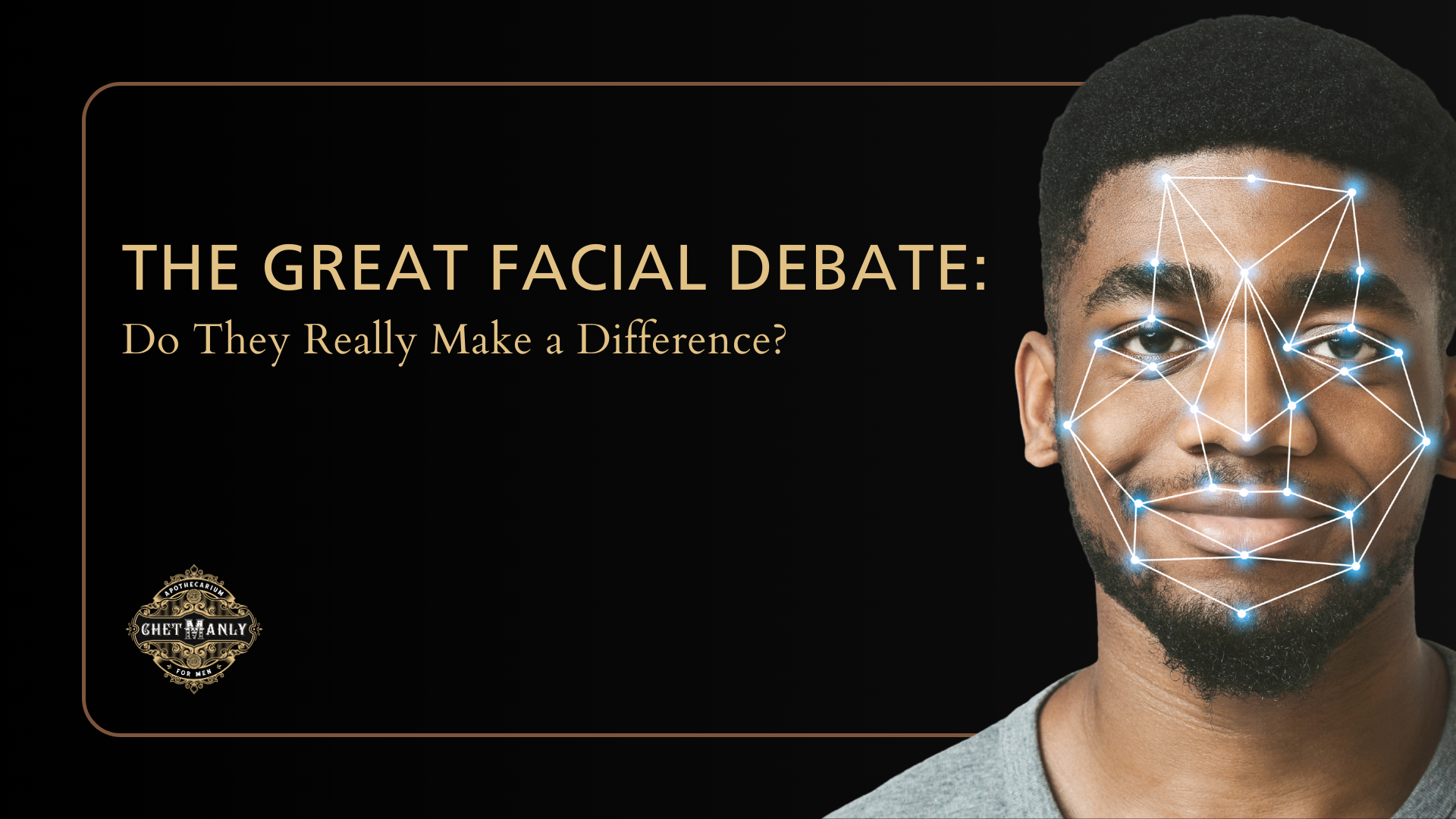Article: How being physically active help with your skin?

How being physically active help with your skin?
Exercise is not just for your muscles and heart; it can also be a game-changer for your skin. Wondering how physical activity can help you get better skin? The secret lies in the comprehensive ways exercise boosts your skin health, from enhancing circulation to managing stress hormones. By engaging in activities ranging from aerobic exercise to strength training, you're not just working on your physique but also contributing positively to your skin's health, making breakouts and acne take a backseat.
Incorporating regular physical activity into your routine does more than just trigger sweat; it opens up a pathway for toxins to exit, improves nutrient delivery to the skin, and strengthens the immune system. Moreover, exercise aids in stress management, reducing the likelihood of stress-induced skin conditions. This holistic approach to health doesn't just stop at making you feel good internally but also manifests externally, showcasing the undeniable link between exercises like aerobic exercise, skin conditioning, and radiant skin.
The Role of Improved Circulation
Regular physical activity significantly enhances skin health by boosting circulation, which is crucial for delivering oxygen-rich blood and essential nutrients to skin cells. This process not only nourishes the cells but also aids in the efficient removal of waste products, including harmful free radicals. Improved blood flow ensures that skin cells are well-maintained, promoting cellular repair and reducing the risk of skin damage.
The mechanics of skin blood flow involve complex systems such as the noradrenergic vasoconstrictor system and an active vasodilator system, which respond dynamically during physical exertion. When the skin is exposed to rapid local heating, the blood flow response is biphasic, showing an initial rapid increase followed by a prolonged plateau phase. This initial increase is primarily mediated by an axon reflex, which promotes vasodilation through the release of neuropeptides like substance P and calcitonin gene-related peptide (CGRP).
Moreover, nitric oxide (NO) plays a pivotal role in enhancing this response. It not only sensitizes the axon reflex but also increases the responsiveness of α1-adrenoreceptors to stimulation by noradrenaline. This interaction is essential for maintaining efficient blood flow during physical activities, thereby supporting skin health by ensuring a consistent supply of nutrients and the removal of toxins.
Sweat it Out: Toxins and Skin Health
Sweating during physical activity, while primarily a cooling mechanism, also plays a role in skin health by facilitating the removal of certain toxins. Research indicates that dynamic exercise can increase the concentration of heavy metals like nickel, lead, and mercury in sweat. This suggests that regular physical activity may be more effective in detoxifying these substances compared to static exposure to heat, such as sitting in a sauna.
However, it's crucial to understand that the primary organs responsible for detoxification are not the sweat glands but the liver and kidneys. These organs process and eliminate most toxins, including drugs and alcohol. Excessive sweating, whether from intense exercise or heat exposure, can strain these organs, potentially leading to water retention and reduced toxin elimination.
Proper skin care after sweating is essential to prevent negative effects such as clogged pores and skin irritation. Gentle cleansing, staying hydrated, and using breathable clothing can help maintain skin health and prevent complications associated with heavy sweating. Engaging in regular physical activity not only aids in minor detoxification but also promotes overall skin health by improving hydration levels and reducing dry skin conditions.
Stress Reduction and Skin Conditions
Regular physical activity plays a crucial role in managing stress, which in turn can significantly impact skin health. Stress hormones, notably cortisol, can exacerbate skin conditions by increasing oil production in the skin, leading to acne and other skin issues. By engaging in exercises, individuals can reduce the levels of stress hormones in their body, which helps in decreasing the occurrence of stress-induced skin conditions such as acne and eczema.
Furthermore, stress is known to trigger a range of skin problems by affecting the immune, endocrine, and neurologic systems, leading to increased skin inflammation and impaired skin barrier function. This can result in more frequent flare-ups of conditions like psoriasis and eczema. However, consistent physical activity has been shown to mitigate these effects by enhancing the body's stress response and improving overall skin health.
To combat stress effectively, incorporating mind-body therapies like meditation and yoga alongside regular physical activity can be beneficial. These practices not only help in reducing the physiological impacts of stress on the skin but also promote healthier lifestyle habits, which further aid in maintaining skin health. By managing stress through these integrated approaches, individuals can see a noticeable improvement in their skin condition and overall well-being.
Age-Defying Benefits of Regular Exercise
Engaging in regular physical activity not only keeps the body fit but also significantly reverses signs of aging, particularly in the skin. Studies reveal that exercise impacts the cellular mechanisms that influence aging. For instance, a European Heart Journal study highlighted two profound cellular changes in individuals who participate in running and high-intensity interval training (HIIT): an increase in telomere length and enhanced telomerase activity. Telomeres, the protective caps at the ends of chromosomes, naturally shorten over time, contributing to aging signs like wrinkles and gray hair. By extending these telomeres, exercise helps maintain youthful skin and reduces the risk of age-related diseases.
Further research at McMaster University supports these findings, demonstrating that regular physical activity can improve skin elasticity, giving it a more youthful appearance, akin to that of individuals decades younger. This effect is partly due to myokines, substances produced by active muscles, which exert beneficial effects on skin cells. Regular exercise also boosts collagen production, enhances nutrient delivery to skin cells, and aids in the efficient removal of waste, contributing to a healthier, more radiant complexion.
The comprehensive benefits of exercise extend beyond superficial appearance. Regular aerobic activities induce changes at the genetic level, such as DNA methylation, which promotes the transcription of genes that stabilize telomeres and increase telomerase activity. This genetic alteration not only supports cellular longevity but also enhances overall health by improving mitochondrial function and increasing muscle protein synthesis. Thus, consistent physical activity serves as a powerful tool against the natural aging process, enhancing both skin health and general well-being.
The Importance of Proper Skin Care While Exercising
Pre-Exercise Skin Preparation
- Sunscreen Application: Always apply a broad-spectrum sunscreen with at least SPF 30 before exercising, even indoors, to protect against UV rays and indoor lighting.
- Moisturizing: Choose a lightweight moisturizer to prevent clogging pores during intense workouts.
- Makeup Removal: Ensure to remove all makeup before starting your exercise to allow the skin to breathe and prevent clogged pores.
During Exercise Skin Care
- Handling Equipment: Disinfect gym equipment before and after use to avoid the transfer of germs that can cause skin irritation.
- Avoid Touching Your Face: Keep your hands away from your face during workouts to prevent the spread of bacteria which can lead to breakouts.
- Sweat Management: Use a soft towel to gently pat off excess sweat during exercise, avoiding harsh rubbing which can irritate the skin.
Post-Exercise Skin Care
- Cleansing: Thoroughly cleanse your skin to remove sweat, oil, and bacteria. If prone to acne, consider a wash containing benzoyl peroxide or sulfur.
- Change Clothes: Immediately change out of sweaty clothes to prevent bacterial growth and skin flare-ups.
- Cool Down: Rinse with cool water or apply a cooling mask post-exercise to calm the skin after exposure to prolonged heat.
Conclusion
Through an exploration of the multifaceted benefits of physical activity on skin health, this article elucidates how exercise is a cornerstone not only for fitness but also for maintaining vibrant and healthy skin. The proven ways through which physical activity can invigorate your skin encompass improved circulation, effective detoxification through sweat, stress reduction, and the promotion of cellular mechanisms that defy aging. These compelling points underscore the unmatched importance of integrating regular physical activity into your daily routine, not just for your overall health but specifically for the radiance and resilience of your skin.
As we've discussed, the synergy between exercise and skin health is undeniable, offering a natural and effective strategy to enhance your skin from within. By focusing on simple, consistent physical activity, you can unlock a myriad of benefits that contribute to a more youthful, glowing complexion. Moreover, incorporating the right skincare regimen post-exercise is crucial for maximizing these benefits and ensuring your skin remains clear and refreshed. If you're looking to bolster your skincare routine with products designed to complement an active lifestyle, consider shopping at our website for your manly skincare needs. Let this be a reminder that the key to healthier, more youthful skin could be as straightforward as lacing up your sneakers and prioritizing your well-being through physical activity and proper skin care.
FAQs
- How does physical activity benefit your skin? Regular physical activity enhances blood flow and circulation, which improves the delivery of nutrients and oxygen to your skin. This not only keeps your skin looking healthy and radiant but also helps in reducing inflammation and blemishes.
- What impact does increased physical activity have on your skin's health? Increased physical activity boosts blood flow, which is crucial for nourishing skin cells and keeping them vital. Enhanced blood circulation not only delivers oxygen and essential nutrients to skin cells but also aids in the removal of waste products, including free radicals, from these cells.
- Which exercises are beneficial for maintaining healthy skin? Several exercises can promote clearer, healthier skin. Facial yoga is popular for its skin-lifting benefits without the need for botox or surgery. Running acts like a self-administered facial, cleansing your skin from within. Swimming, aerobics, and weight training, including body-weight exercises, also contribute positively to skin health.
- What are five positive effects of physical activity on your body? Engaging in physical activity has multiple benefits:
-
- It provides immediate benefits to your health.
- It helps in managing weight effectively.
- It reduces the risk of various health issues.
- It strengthens your bones and muscles.
- It enhances your ability to perform daily activities and prevents falls.
- It increases your lifespan and helps in managing chronic health conditions and disabilities.
References
[1] - https://www.usdermatologypartners.com/blog/will-exercising-improve-my-skin/
[2] - https://www.ncbi.nlm.nih.gov/pmc/articles/PMC8018252/
[3] - https://www.webmd.com/skin-problems-and-treatments/acne/features/exercise
[4] - https://www.ncbi.nlm.nih.gov/pmc/articles/PMC1780010/
[5] - https://www.avogel.co.uk/health/skin/why-is-your-circulatory-system-so-vital-for-your-skin/
[6] - https://www.chateliercosmetics.com/blogs/natural-beauty-journal/what-are-the-benefits-of-improving-circulation-for-the-skin
[7] - https://www.usdermatologypartners.com/blog/is-sweating-good-for-your-skin/
[8] - https://www.webmd.com/skin-problems-and-treatments/what-to-know-about-sweating
[9] - https://www.ncbi.nlm.nih.gov/pmc/articles/PMC8998800/
[10] - https://uamshealth.com/medical-myths/can-you-sweat-toxins-out-of-your-body/
[11] - https://www.ncbi.nlm.nih.gov/pmc/articles/PMC8343902/
[12] - https://www.healthline.com/health/sweating-benefits
[13] - https://www.amymyersmd.com/article/benefits-of-sweating
[14] - https://healthcare.utah.edu/healthfeed/2024/01/stressed-out-skin-link-between-stress-and-skin-health
[15] - https://www.ncbi.nlm.nih.gov/pmc/articles/PMC8480446/
[16] - https://www.health.harvard.edu/blog/stress-may-be-getting-to-your-skin-but-its-not-a-one-way-street-2021041422334
[17] - https://roccoco.com/blogs/blog_posts/the-impact-of-stress-on-skin-health-tips-to-improve-your-skin-tone
[18] - https://www.lather.com/blogs/radiant-life-blog/how-exercise-can-help-your-skin-looking-young
[19] - https://www.health.com/fitness/anti-aging-exercise
[20] - https://www.ncbi.nlm.nih.gov/pmc/articles/PMC5980968/
[21] - https://www.everydayhealth.com/skin-beauty/skin-care-musts-before-after-your-workout/
[22] - https://rosafaskincare.com/blogs/our-journal/workout-skincare-routine
[23] - https://www.barefaced.com/blogs/blog/skincare-for-when-you-workout
[2] - https://www.ncbi.nlm.nih.gov/pmc/articles/PMC8018252/
[3] - https://www.webmd.com/skin-problems-and-treatments/acne/features/exercise
[4] - https://www.ncbi.nlm.nih.gov/pmc/articles/PMC1780010/
[5] - https://www.avogel.co.uk/health/skin/why-is-your-circulatory-system-so-vital-for-your-skin/
[6] - https://www.chateliercosmetics.com/blogs/natural-beauty-journal/what-are-the-benefits-of-improving-circulation-for-the-skin
[7] - https://www.usdermatologypartners.com/blog/is-sweating-good-for-your-skin/
[8] - https://www.webmd.com/skin-problems-and-treatments/what-to-know-about-sweating
[9] - https://www.ncbi.nlm.nih.gov/pmc/articles/PMC8998800/
[10] - https://uamshealth.com/medical-myths/can-you-sweat-toxins-out-of-your-body/
[11] - https://www.ncbi.nlm.nih.gov/pmc/articles/PMC8343902/
[12] - https://www.healthline.com/health/sweating-benefits
[13] - https://www.amymyersmd.com/article/benefits-of-sweating
[14] - https://healthcare.utah.edu/healthfeed/2024/01/stressed-out-skin-link-between-stress-and-skin-health
[15] - https://www.ncbi.nlm.nih.gov/pmc/articles/PMC8480446/
[16] - https://www.health.harvard.edu/blog/stress-may-be-getting-to-your-skin-but-its-not-a-one-way-street-2021041422334
[17] - https://roccoco.com/blogs/blog_posts/the-impact-of-stress-on-skin-health-tips-to-improve-your-skin-tone
[18] - https://www.lather.com/blogs/radiant-life-blog/how-exercise-can-help-your-skin-looking-young
[19] - https://www.health.com/fitness/anti-aging-exercise
[20] - https://www.ncbi.nlm.nih.gov/pmc/articles/PMC5980968/
[21] - https://www.everydayhealth.com/skin-beauty/skin-care-musts-before-after-your-workout/
[22] - https://rosafaskincare.com/blogs/our-journal/workout-skincare-routine
[23] - https://www.barefaced.com/blogs/blog/skincare-for-when-you-workout

